Jinghsu Liu
Lingua Custodia's participation at the WMT 2021 Machine Translation using Terminologies shared task
Nov 03, 2021

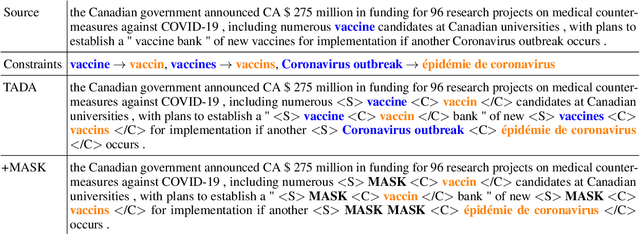

Abstract:This paper describes Lingua Custodia's submission to the WMT21 shared task on machine translation using terminologies. We consider three directions, namely English to French, Russian, and Chinese. We rely on a Transformer-based architecture as a building block, and we explore a method which introduces two main changes to the standard procedure to handle terminologies. The first one consists in augmenting the training data in such a way as to encourage the model to learn a copy behavior when it encounters terminology constraint terms. The second change is constraint token masking, whose purpose is to ease copy behavior learning and to improve model generalization. Empirical results show that our method satisfies most terminology constraints while maintaining high translation quality.
Encouraging Neural Machine Translation to Satisfy Terminology Constraints
Jun 07, 2021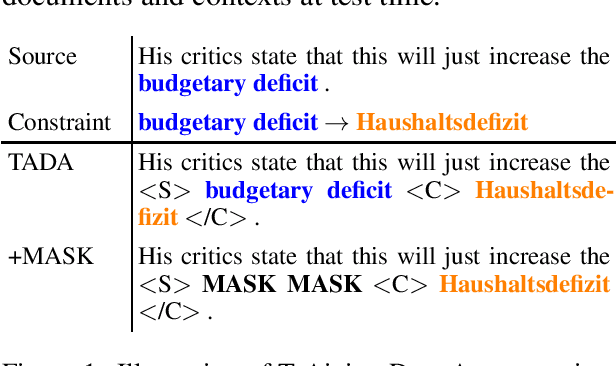
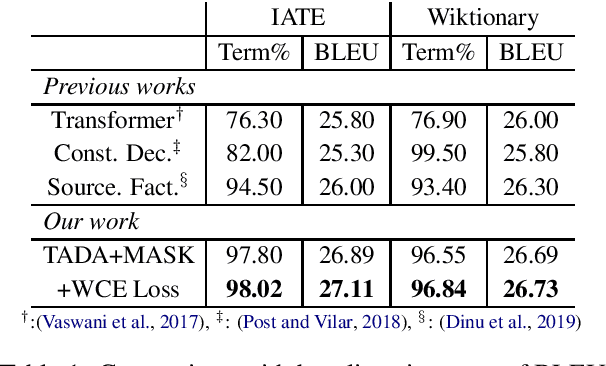
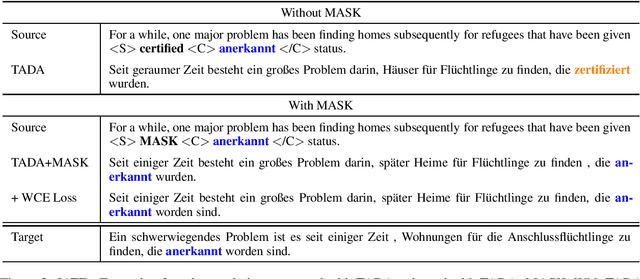
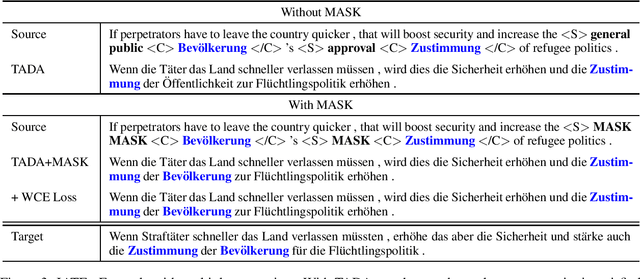
Abstract:We present a new approach to encourage neural machine translation to satisfy lexical constraints. Our method acts at the training step and thereby avoiding the introduction of any extra computational overhead at inference step. The proposed method combines three main ingredients. The first one consists in augmenting the training data to specify the constraints. Intuitively, this encourages the model to learn a copy behavior when it encounters constraint terms. Compared to previous work, we use a simplified augmentation strategy without source factors. The second ingredient is constraint token masking, which makes it even easier for the model to learn the copy behavior and generalize better. The third one, is a modification of the standard cross entropy loss to bias the model towards assigning high probabilities to constraint words. Empirical results show that our method improves upon related baselines in terms of both BLEU score and the percentage of generated constraint terms.
 Add to Chrome
Add to Chrome Add to Firefox
Add to Firefox Add to Edge
Add to Edge